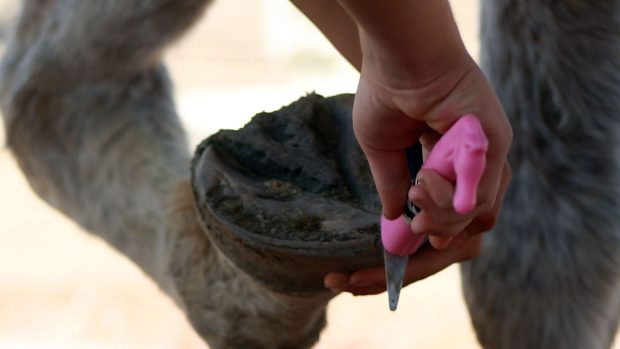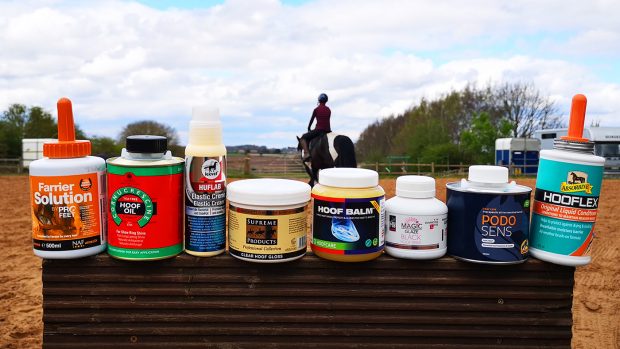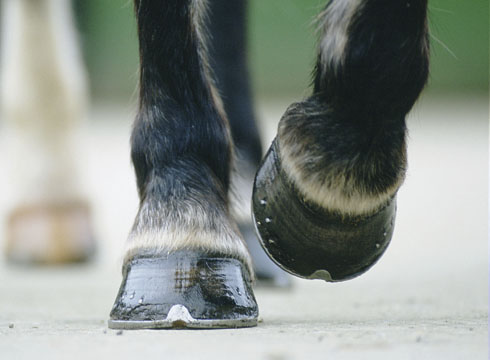Foot pain is one of the commonest causes of lameness in the horse. The most frequent cause of equine foot pain is pus in the hoof, which is properly called a sub-solar hoof abscess. This is particularly common during a wet winter, when moisture, dirt and bacteria track up through tiny cracks in the hoof. Infection then rapidly develops, with a build-up of pus within the confines of the hoof, which is extremely painful for the horse.
Signs of pus in the foot in horses
In the early stages of an infection there may only be a slight lameness. However, this condition may progress to the point at which the horse is so sore, it will not put the foot to the ground – it is literally hopping lame.
Other signs include:
- Increased heat in the foot – the affected hoof may feel hotter than the others
- Increased pulse – feel it at the side of the fetlock
- Pain and discomfort
- Swelling up the leg, which may be mistaken for a tendon injury
- Pus discharging from the coronary band. If the abscess is not drained from the bottom of the foot, it will often burst out from the coronary band
How to treat pus in the foot in horses
If you suspect your horse has pus in his foot due to an infection, you should contact your vet or farrier to attend to him as soon as possible. The cure is to drain the abscess, which will often involve removing the shoe. Once the abscess has been located and the pus drained out, the foot will begin to heal.
The degree of lameness should improve rapidly within 12-24 hours after the abscess has been opened and the pus drained out. If the lameness does not improve, this may indicate a more serious problem, which will require further extensive investigations.
To encourage the abscess to drain completely, put a poultice on the foot, and keep it in place with a bandage. You should avoid hot poulticing around the coronary band as this might burn the skin. It is also recommended to encourage the infection to drain downwards, rather than burst open at the coronary band.
Once the abscess has drained, you should clean the whole foot. Sometimes soaking the foot in a tub of warm water with a little table salt or Epsom salts will help to clean it, as well as easing the pain.
Your vet or farrier will advise you on how to clean the actual area of the abscess. It may need to be flushed with hydrogen peroxide or other antiseptic solution to reduce the infection.
It is important that the foot is kept poulticed, or protected with a clean dressing, until it has healed sufficiently to prevent further dirt entering the area of damage and reinfecting the foot. Sometimes you can pack the hole made by the abscess with cotton wool soaked in an antiseptic foot spray until it has healed.
Keep the horse in clean, dry conditions until the hole is completely healed, when the hoof may be re-shod.




